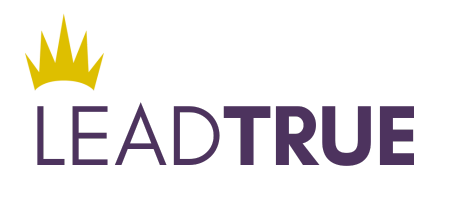From Drama to Dharma: The Leadership Shift That Answers Your Deepest Calling
Are you a leader who’s done the inner work—yet senses something is still missing?
You've read the books, attended the workshops, and led teams successfully. Yet late at night, you feel a subtle yearning: a sense that a deeper shift is required to truly align your leadership with your higher purpose. It’s as if, despite all the skills and self-awareness, you're still managing dysfunctions instead of fully embodying the meaning and impact you know you’re here to create.
The Crisis of Consciousness in Experienced Leadership
This feeling isn't just in your head; many experienced leaders are facing what can be called a crisis of consciousness. After years of refining their craft, they find themselves entangled in familiar dramas—unproductive conflicts, relentless firefighting, and roles that relentlessly drain their energy.
Psychologists call it the Drama Triangle, where we unconsciously slip into roles of Victim, Rescuer, or Persecutor during conflict. These roles can feel familiar (even oddly comforting), but over time, they sap our vitality—draining energy, eroding trust, and create toxic team dynamics. Even seasoned leaders can get stuck in this triangle, rotating between feeling powerless, over-responsible, or adversarial.
The yearning for more comes from knowing, deep down, that there's another, more conscious way to lead.
Shifting from Drama to Dharma
(Dharma is a Sanskrit word difficult to translate in one word. It means: “the natural order + your unique purpose + right action + cosmic truth”.)
A profound shift is happening in conscious leadership circles: moving from the Drama Triangle to what we call the Dharma Triangle.
In the Dharma Triangle, those same life challenges are met with very different, empowered stances:
Creator instead of Victim
Coach instead of Rescuer
Challenger instead of Persecutor
This transition is about stepping out of unconscious reactions and into conscious creation. The Shakti Leadership philosophy sums this up as “seeing clearly the ‘allies and enemies’ at play and working with them skillfully.” In practice, it means recognizing the hidden gifts in each challenge.
You learn to spot which forces in a situation are true supporters (allies) and which seem like opponents (enemies)—and then engage each with wisdom rather than fear.
Why Your "Enemy" is Your Greatest Teacher
Here’s the surprising part: sometimes the “enemy” is actually your greatest teacher.
When you shift from drama to dharma, you begin to reframe what you once saw as opposition. The obstacle or difficult person you labeled a villain transforms into a challenger—someone who tests you and pushes you to grow.
In the Dharma Triangle perspective, even a conflict or “opponent” carries a message or opportunity. Instead of responding as a Victim (“Why is this happening to me?”), you respond as a Creator, Coach, or Challenger who asks:
“What is this situation asking of me? What can I create from this?”
This reframing is liberating. It shifts you out of victimhood and into creatorship, putting you back in charge of your story. Suddenly, problems become fuel for your purpose rather than roadblocks.
The Ripple Effect: Transforming Team Culture
Why does this shift matter so much—not just for you, but for those you lead?
Because when you stop feeding the drama, you break a cycle that has quietly been holding everyone back. The moment you embody Creator/Coach/Challenger energy, it ripples outward. Clarity increases, and conversations pivot toward solutions.
Your team senses the change: trust grows, and people feel safe to take ownership. Instead of one person rescuing or blaming, everyone starts stepping up as empowered problem-solvers. Leaders who model these empowerment roles build more sustainable teams—employees feel ownership, creativity flows, and energy goes into solutions instead of blame.
In short, shifting out of the drama mindset doesn’t just lighten your own load; it transforms your workplace culture. Conflicts turn into opportunities for growth. Accountability replaces finger-pointing. The whole system gets an upgrade in consciousness.
The Call of Dharma
Perhaps the most important insight is that this isn’t a "skill" you tack on; it’s a new way of being. Think of it as an initiatory journey. The shift from Drama Triangle to Dharma Triangle is a rite of passage in your leadership evolution—one that calls you to show up with wholeness and higher purpose.
It asks you to let go of old patterns and step into the creative power you’ve had all along. This is the kind of deep transformation at the heart of conscious leadership.
If you’ve read this far and something inside is saying “Yes, this is me,” I invite you to explore this further. Your higher purpose awaits—and it starts when you decide to leave the drama behind and answer the call of your dharma.
Connect with me via the contact form below to explore how making this shift from drama to dharma could look in your own leadership journey.
References
Bhat, N., & Raj Sisodia. (2016). Shakti Leadership. Berrett-Koehler Publishers.
Emerald, D. (2016). The power of TED : the empowerment dynamic. Polaris Publishing.
Karpman, S. (1968). Fairy tales and script drama analysis. Transactional Analysis Bulletin, 7(26), 39-43.
About the Author
Lead True Global Leader Andrea Henning’s vision is that when people discover their authenticity and dare to follow their bliss they are happier and more successful in their lives while serving as an inspiration to their communities.







